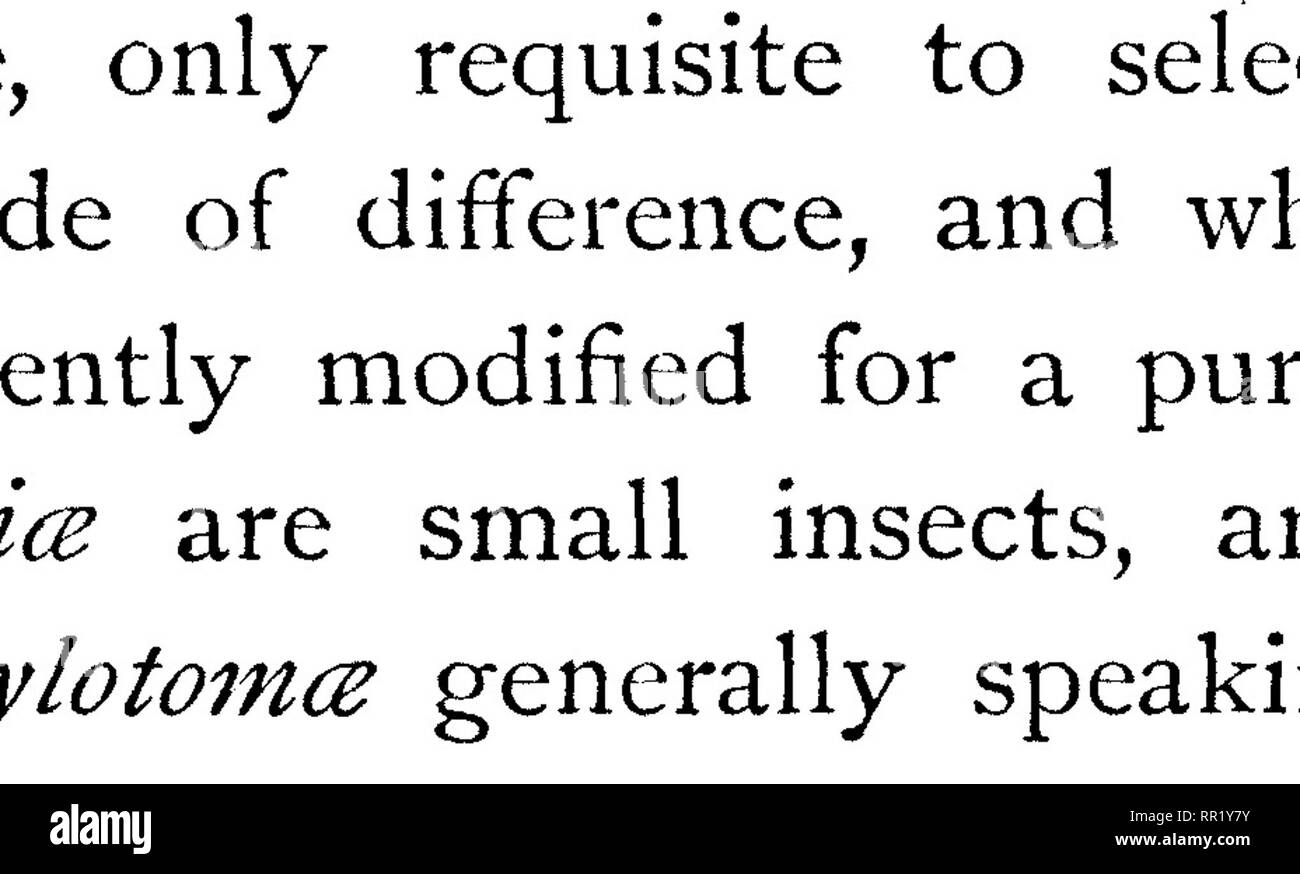. The transformations (or metamorphoses) of insects. Insects; Insects; Myriapoda; Arachnida; Crustacea. THE TENTHREDITES, 17 5 The females lay their eggs by inserting them with their saw- ovipositor between the skin or cuticle of the turnip leaf and its cellular or parenchymatous structure. The o.^^ is therefore only separated from the atmosphere by a most delicate membrane, so that the heat and moisture soon affect it and hatch the little Athalia centifolice very rapidly. It appears necessary that this tgg should be exposed to much heat in order to hasten the birth in time for the turnip to b

Image details
Contributor:
Library Book Collection / Alamy Stock PhotoImage ID:
RR1Y7YFile size:
7.1 MB (206.6 KB Compressed download)Releases:
Model - no | Property - noDo I need a release?Dimensions:
2035 x 1228 px | 34.5 x 20.8 cm | 13.6 x 8.2 inches | 150dpiMore information:
This image is a public domain image, which means either that copyright has expired in the image or the copyright holder has waived their copyright. Alamy charges you a fee for access to the high resolution copy of the image.
This image could have imperfections as it’s either historical or reportage.
. The transformations (or metamorphoses) of insects. Insects; Insects; Myriapoda; Arachnida; Crustacea. THE TENTHREDITES, 17 5 The females lay their eggs by inserting them with their saw- ovipositor between the skin or cuticle of the turnip leaf and its cellular or parenchymatous structure. The o.^^ is therefore only separated from the atmosphere by a most delicate membrane, so that the heat and moisture soon affect it and hatch the little Athalia centifolice very rapidly. It appears necessary that this tgg should be exposed to much heat in order to hasten the birth in time for the turnip to be enjoyed by the larva. Newport states, that the cocoon of this insect is lined with silk. The larvae of the genus Selandria are of a somewhat peculiar shape. Their legs are extremely short, and their bodies are lubri- cated with a viscid secretion which makes them look like small slugs. Reaumur, in fact, called them slug larvae. The larvae of Selandria yEtkiops often become very injurious to cherry, pear, . Lophyrus pint. and other fruit trees. They remain perfectly quiet during the heat of the day, and seem to draw their heads within the first segment of their bodies, and they are then covered over with the slimy moisture so as not to look like insects at all. By night and during the early morning they are lively enough, and they then devour the foliage. The Lydites form a small group of saw-flies which are charac- terised by having a great number of joints to their antennae. They are the saw-flies of the north, and they attack fir trees and pines. The Lophyri, which belong to this group, have a thick body, and the males have doubly pectinated and feathery antennae. The species are very difficult to separate, and entomologists have had to take into consideration the disposition of the nervures of the wings, in order to decide upon particular forms with certainty. The commonest species is Lophyrus pint. The male is quite. Please note that these images are extracted from scanned